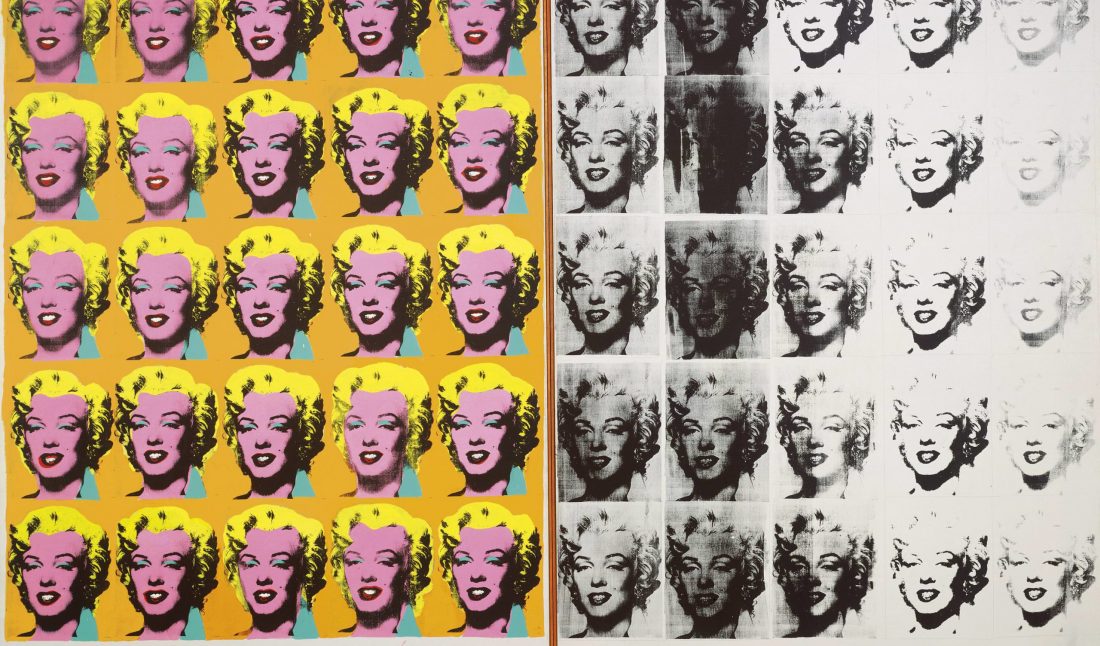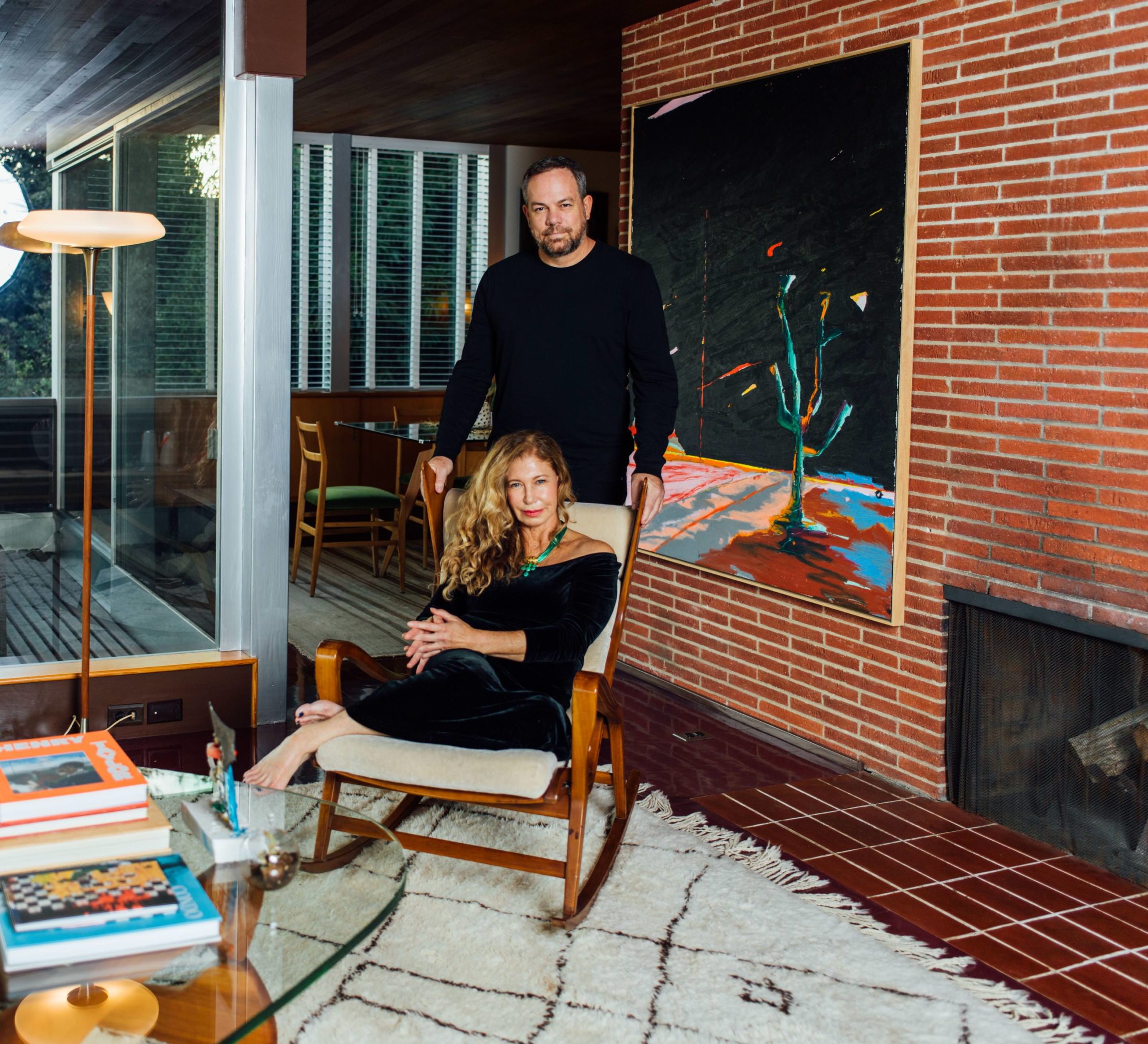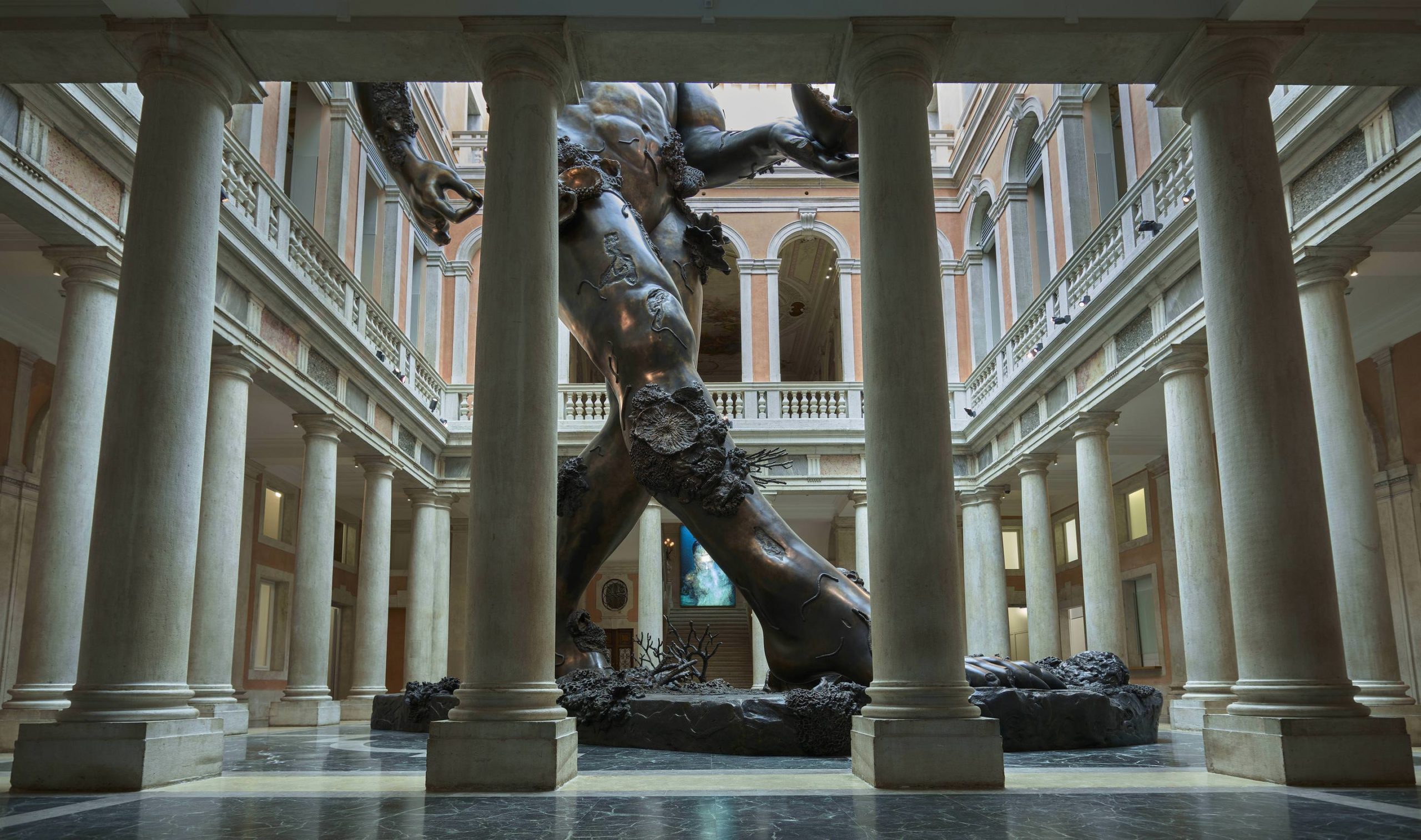What does it mean to be to a modern artist?
It is not enough to simply be living and producing artwork between (approximaely) 1860 and 1970. No, the category of “modern art” implies a deeper connection between the work and its time; it suggests that context is essential to understanding the art. Modern art is intertwined with the ideals of experimentation and abstraction, specific to that point in history. As is the case of Andy Warhol, whose art cannot be fully understood without post World War II mass media and the rise of commercialization. His images have become iconic in contemporary American culture, from refrigerator magnets to album covers. Yet, over the decades, they have lost their context.
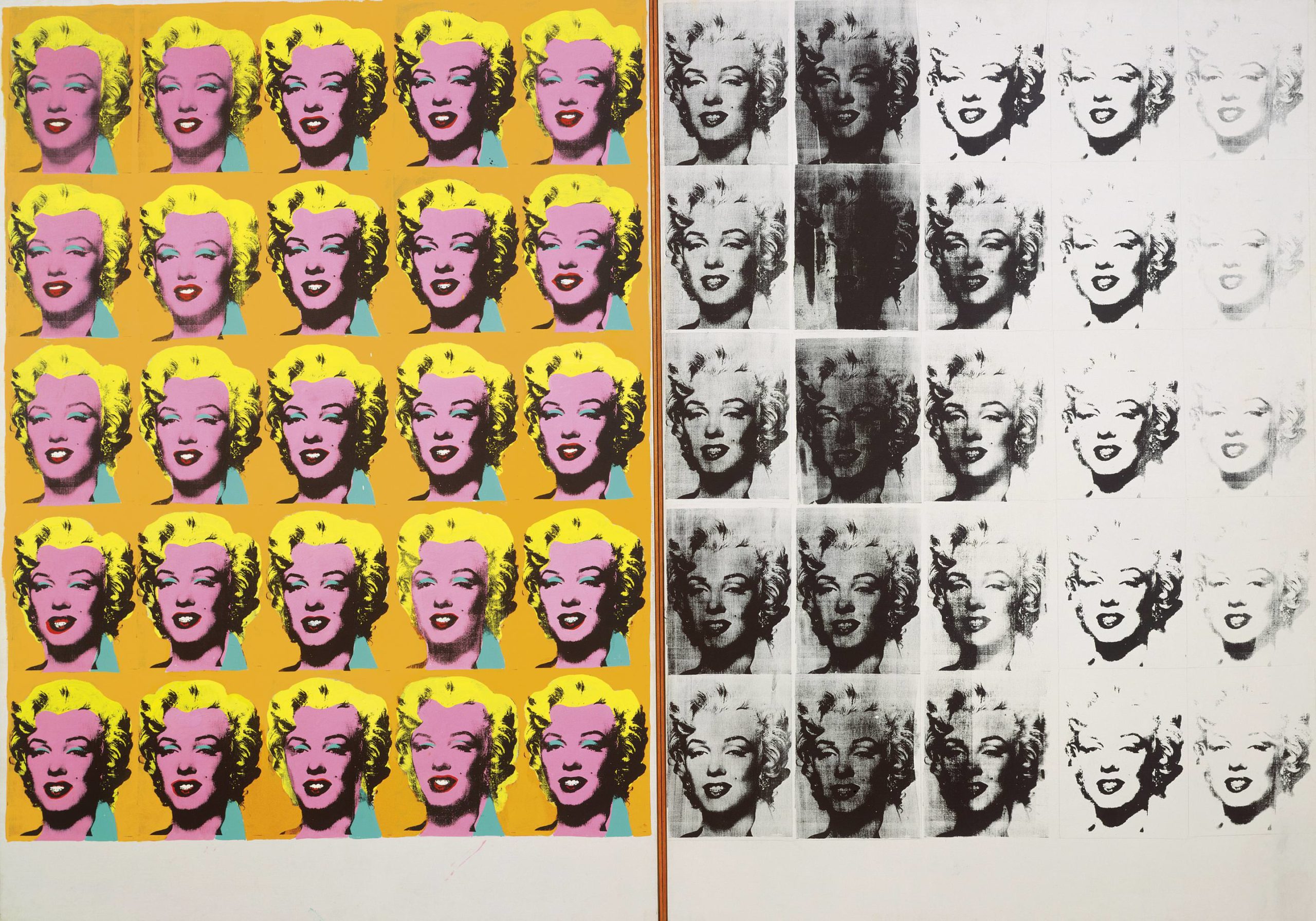 Andy Warhol (1928–1987), Marilyn Diptych, 1962. Acrylic, silkscreen ink, and graphite on linen, two panels: 80 7/8 x 114 in. (205.4 x 289.6 cm) overall. Tate, London; purchase 1980 © The Andy Warhol Foundation for the Visual Arts, Inc. / Artists Rights Society (ARS) New York
Andy Warhol (1928–1987), Marilyn Diptych, 1962. Acrylic, silkscreen ink, and graphite on linen, two panels: 80 7/8 x 114 in. (205.4 x 289.6 cm) overall. Tate, London; purchase 1980 © The Andy Warhol Foundation for the Visual Arts, Inc. / Artists Rights Society (ARS) New York
Showing collaborations with his contemporaries (like Keith Haring and Jean-Michel Basquiat) and items from his personal archives, the Whitney Museum of American Art re-institutes that context in “Warhol: From A to B and Back Again.” Of course, it would not truly be a Warhol retrospective without the classic Marilyn Diptych, Brillo Boxes, and special appearance (all the way from the nearest supermarket) from the Campbell Soup Cans. It’s refreshing to see these well-known works in person, to see the imperfections in his prints that are often invisible in filtered photographs. The exhibition, on view now through March 31, 2019, let’s viewers see the small creases and flaws, a loose stitch in his gelatin prints, and the subtle inconsistencies between near-identical prints.
While his fan favorites may attract a constant crowd, there are also some amazing, less-recognizable pieces of his on display. Warhol’s experimental films, for instance, once acclaimed for their radicalness, are on view. In 16mm of avant-garde oddness, Warhol explores obsessiveness and stardom.
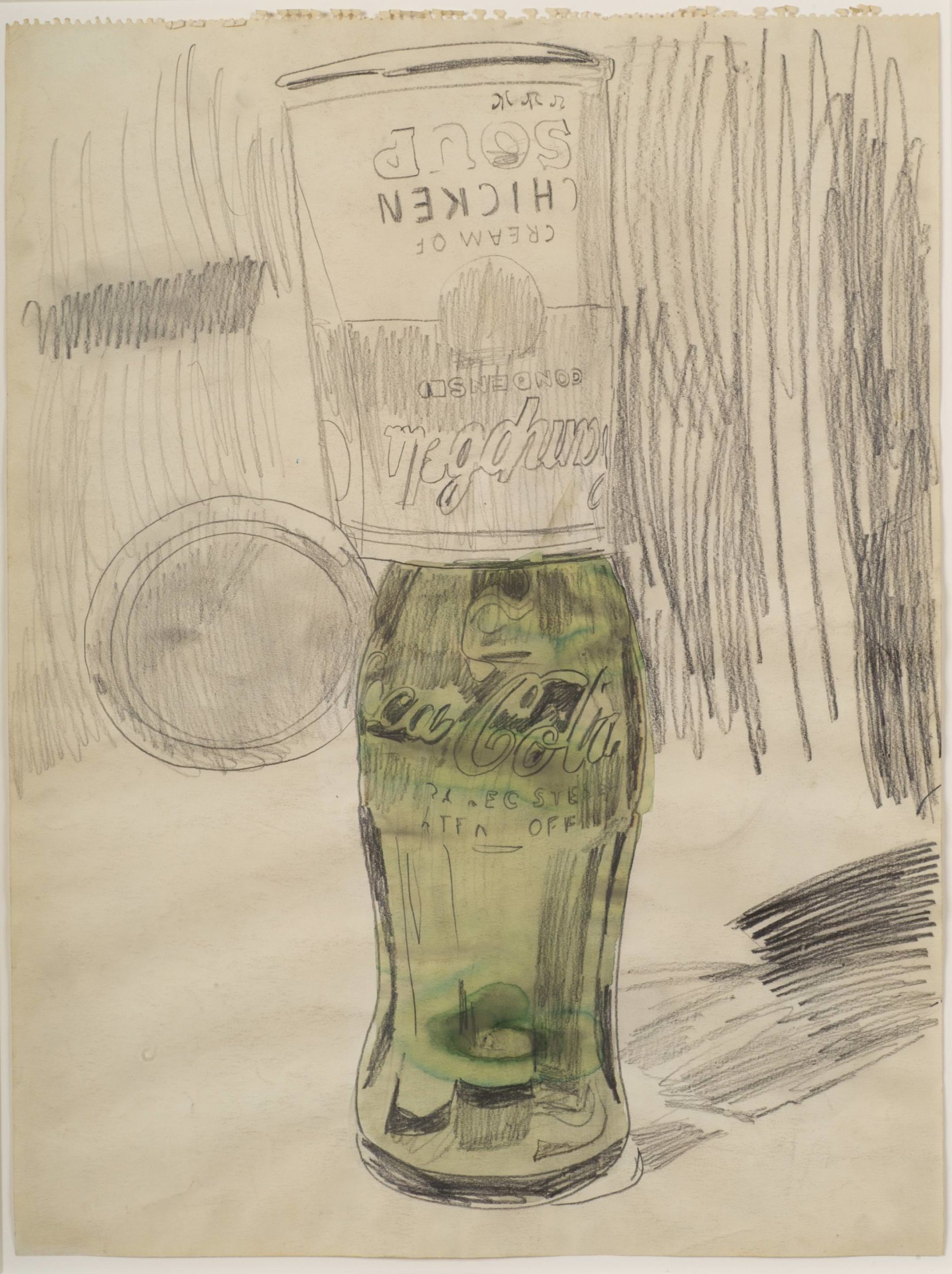 Andy Warhol (1928–1987), Campbell’s Soup Can over Coke Bottle, 1962. Graphite and watercolor on paper, 23 1⁄2 × 17 3⁄4 in. (59.7 × 45.1 cm). The Brant Foundation, Greenwich, CT © The Andy Warhol Foundation for the Visual Arts, Inc. / Artists Rights Society (ARS) New York
Andy Warhol (1928–1987), Campbell’s Soup Can over Coke Bottle, 1962. Graphite and watercolor on paper, 23 1⁄2 × 17 3⁄4 in. (59.7 × 45.1 cm). The Brant Foundation, Greenwich, CT © The Andy Warhol Foundation for the Visual Arts, Inc. / Artists Rights Society (ARS) New York
His early works on paper are remarkable. In totally simple, yet, beautiful, clean graphite and ballpoint drawings, there is a type of expressiveness that is absent in some of his later work. He shows an early interest in satirical representations of contemporary commercialism, especially in his “Golden Shoe” series. They are consistent with the subject and style of his later works, critiquing culture through cropping and exaggerating color, only in a different medium. While of course, the show in its entirety retains the glamour associated with Warhol, the humbleness of this area gives the viewer a kind of closeness to Andy; it humanizes him.
Warhol is known for his technical experimentation with mechanical, factory-like production process. He critiques the industrial process by abstracting the familiar, removing it from reality. He distorts pop culture until it becomes strange and unusual, until the most recognizable symbols morph their messages. Even the iconic Hammer and Sickle is no match for Warhol who appropriates its message into his own. One of the most obvious examples of this is the Camouflage Last Supper (1986) where he conceals Da Vinci’s famous painting inside his own identity struggle as both a gay man and a Catholic. Famous celebrities and art historical references, it’s no wonder that the Whitney opening had a line out the door.
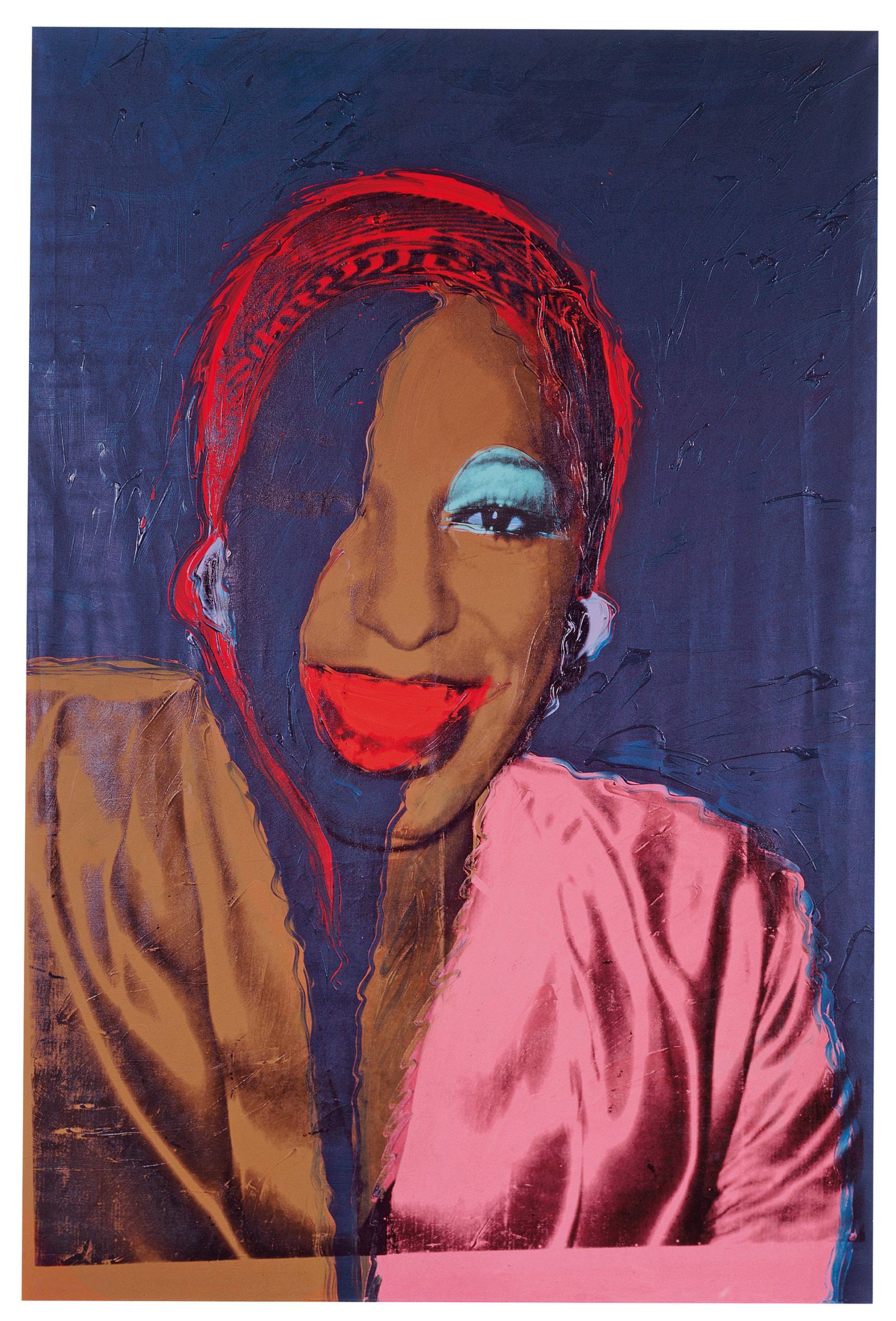 Andy Warhol (1928–1987), Ladies and Gentlemen (Wilhelmina Ross), 1975. Acrylic and silkscreen ink on linen, 120 x 80 in. (304.8 x 203.2 cm). Fondation Louis Vuitton, Paris © The Andy Warhol Foundation for the Visual Arts, Inc. / Artists Rights Society (ARS) New York
Andy Warhol (1928–1987), Ladies and Gentlemen (Wilhelmina Ross), 1975. Acrylic and silkscreen ink on linen, 120 x 80 in. (304.8 x 203.2 cm). Fondation Louis Vuitton, Paris © The Andy Warhol Foundation for the Visual Arts, Inc. / Artists Rights Society (ARS) New York
“This show will be like all the others, the review will be bad—my reviews always are. But the reviews of the party will be terrific,” Warhol once said. While this certainly isn’t a bad review of the show, Warhol did get the second part of his statement correct. On opening night, the lobby of the Whitney, often overrun with tourists and school groups, transformed into a sea of black and white costumes, each outperforming the last. I have no doubt that Warhol would have loved the theatrics of this opening spectacle, a coronation for the King of Pop Art.






